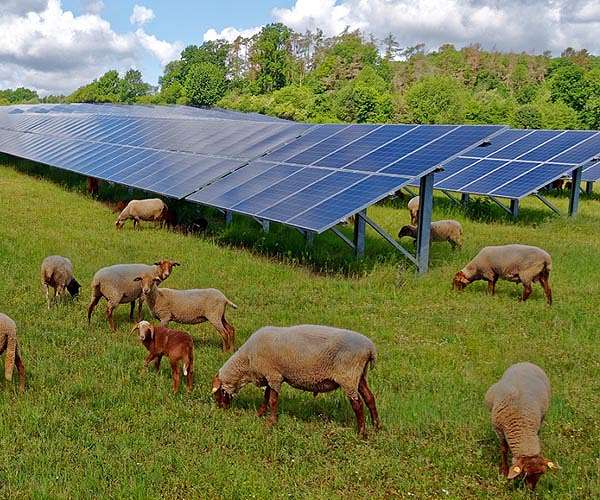Agrivoltaic systems receive public favor in relation to conventional solar parks
Photovoltaic systems are increasingly common in open landscapes, but public approval often lags behind. A recent study from the University of Bonn shows that Agrivoltaics-Solar panels on agricultural land have been installed-apparently more accepted by the public than standard solar parks.
Agrivoltaic systems integrate solar panels with active agricultural use, such as placing panels over vineyards, meadows or crop fields. Although these installations can reduce the crop yields, they can also provide additional benefits. For example, they can act as awnings to protect crops against extreme weather or as wind barriers, similar to hedges.
The study included nearly 2,000 respondents in Germany, selected to display the demographic distribution of the nation. Participants were shown image pairs that compare agricultural land with and without solar installations, including scenarios with grazing cattle, wheat fields and vineyards. Each scenario was also linked to images of conventional solar parks in comparable settings.
Researchers then permitted the perception of the participants of visual attraction, recreational value and their willingness to pay a premium for electricity generated from these countries. Results indicated that Agrivoltaïschen resulted in consistently more favorable reactions. About 44 percent of the participants were willing to pay more for Agrivoltaic electricity, compared to 29 percent for energy from standard solar parks. Only 2.9 percent expressed the willingness to pay to prevent Agrivoltaics, while 4.8 percent would finance opposition against conventional parks.
Although the respondents generally found a solar infrastructure that was harmful to the aesthetics of landscape, Agrivoltaïschens were less negative because they merge energy and food production instead of completely moving agriculture.
“Our survey is hypothetical-the participants do not have to spend real money,” said Prof. Dr. Matin Qaim from the University of Bonn, a co-author of the study. “Nevertheless, the results enable us to conclude that Agrivoltaics a greater acceptance between the public than normal open-space solar systems.”
However, practical barriers continue to exist. As Zef researcher Hendrik Zeddies notes, Agrivoltaic systems are more expensive and less productive than traditional setups. “Without subsidies it will probably not be possible to install many systems,” he added.
Research report:Agrivoltaics increases public acceptance of the production of solar energy on agricultural land

